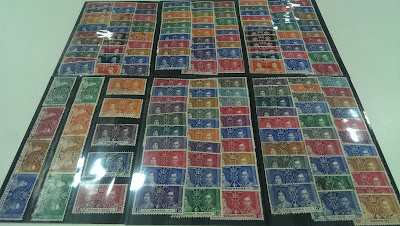I have tried a few ways to remove self-adhesive stamps now, mostly unsuccessful. But I seem to have found a method that actually works.
I tried lighter fluid as explained in one of the videos I listed in my
earlier post on removing stamps from paper. I specially bought Zippo lighter fluid but unfortunately this doesn't work for me. For some reason it seems to make the adhesive stronger and stamps seem to stick stronger to the paper. Maybe it's just a different kind of lighter fluid than what is required.
Another video said to use Citrus spray. Ambipur room freshner was the closest that I could find to this in India. This surprisingly worked a lot better than the lighter fluid. I spray this on the paper wait a few seconds and the paper comes off. However this method also doesn't completely remove paper cleanly. Some paper residue will remain on the stamp. Sometimes the paper does come off completely but the layer of glue remains that you have scrape off which is likely to damage the stamp.
What seems to have worked for me is putting stamps in reasonably hot water (not boiling water). Soak the stamps for a few minutes in hot water and the paper is most likely to come out cleanly. In some cases you may still have to scrape residual paper and glue off the stamp, which is likely to damage the stamp. Be careful and use tweezers in this method as the water and the stamps are hot.
Of course, none of the above methods are completely foolproof. So if you have a stamp that you really want and have only one copy of it, I would advise you to just leave it on paper.
In my search, I also found two commercial label and adhesive remover products. I haven't tried these but if you've have any experience with these, then please do share your experience by leaving a comment.




















































